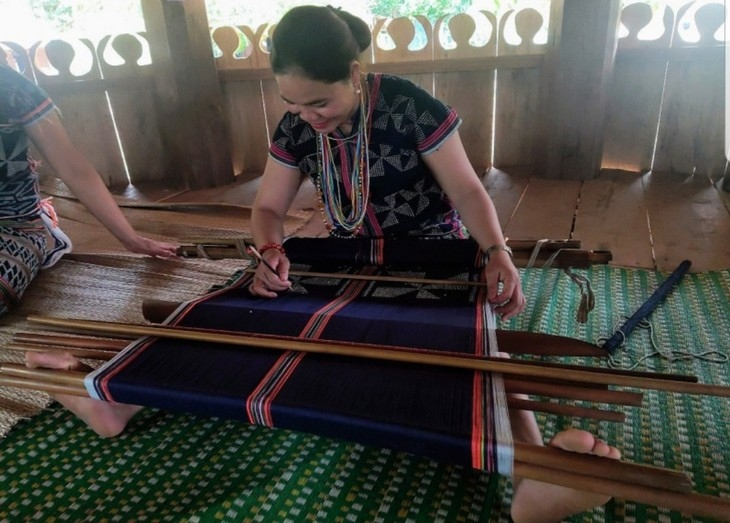The Co Tu people have a long tradition of cotton farming and brocade weaving. They discovered the cotton tree (Kpay) in the forest and brought it back to cultivate on their mountain fields. The domesticated version of the cotton tree, known as “upperian cotton” or “cotton of grass,” is widely grown and used by the Co Tu group.
Weaving is an essential skill for Co Tu girls of marriage age, and it is considered a measure of their talent and virtue. Co Tu brocade products are handmade, reflecting the craftsmanship and cultural identity of the Co Tu people. The main colors used in their costumes are black and red, symbolizing the earth and the sky, respectively. Blue, white, and yellow are also used to represent the forest, mountains, and embellishments.
The Co Tu people use a primitive loom made from bamboo sticks to weave their fabrics. Although the loom has limited capabilities, it produces fabrics that are imbued with the cultural identity of the Co Tu. The Co Tu are known for their weaving techniques, including beaded patterns, colored thread patterns, wavy patterns, and stitching. The beads are intricately woven into the fabric, creating unique and valuable Co Tu brocade costumes.
Each Co Tu brocade product has a specific use and aesthetic value. The Co Tu people weave various garments such as cloth, shirt, robe, loincloth, and skirt. These garments showcase the creativity and skill of the weaver. Patterns are inspired by nature, such as trees, leaves, birds, and traditional Co Tu houses.
In recent years, efforts have been made to restore Co Tu brocade weaving villages in Quang Nam province. Younger generations have learned the art of weaving, and the tradition continues to be passed down. However, the lack of outlets remains a challenge for the Co Tu people. In 2014, Co Tu brocade weaving was recognized as a national intangible cultural heritage in Vietnam.




